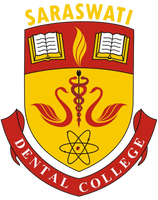
Over the years, the pain has been defined numerous times in several ways. In oral and maxillofacial surgery, the occurrence of pain, especially postoperatively, is anticipated. Pain arises as a combination of various processes after tissue damage.
In dentistry, the pain has been a familiar chief complaint of every patient who suffers from it. Dentists are aware that it is their mission to relieve this experience.
Acute and Chronic Pain
Acute pain happens right after an injury. Peripheral and central sensitization is involved in this type of pain, and their modulation is essential to alleviate it. Subsequently, chronic pain happens when the pain persisted even when the source of acute pain had been given intervention. Chronic pain is a complicated occurrence that differs from patient to patient, and the intensity and characteristics can vary as well.
Characteristics of Pain
Understanding the characteristics of pain helps in diagnosis and treatment planning. The nature of postoperative dental pain is inflammatory, nociceptive, and neuropathic in origin.
Inflammatory Pain
Inflammatory pain is produced after tissue injury as a response to actively performing vascular and nervous structures. It was known that the degree of pain commensurate to the tissue damage that was done and is precisely associated with tissue healing
Nociceptive Pain
Nociceptive pain is also protective in nature, similar to inflammatory pain. Furthermore, a distinctive feature of this kind of pain is that it warns the body from further harming itself.
Neuropathic Pain
Neuropathic pain, as redefined by NeuPSIG and the International Association of the Study of Pain, is the “pain arising as a direct consequence of a lesion or disease affecting the somatosensory system.” This entails that the pain comes from the lesion emerging from the peripheral or central nervous system.
Peripheral Painful Traumatic Trigeminal Neuropathies
Associated with neuropathic pain is peripheral painful traumatic trigeminal neuropathies (PPTTN), which occurs 3 months after surgical involvement. Tendencies of PPTTN were attributed to nerve injuries after treatment.
Treatment for Acute Pain
Since dentoalveolar surgery is the first and foremost framework of oral maxillofacial surgery, common pain relief agents are recommended. Nonopioid pain treatment such as acetaminophen is known to have therapeutic effects on mild to moderate pain with added anti-inflammatory outcomes that can be used for postoperative pain. Al-khateeb and Alnahar also mentioned that commonly used postoperative medications are paracetamol and NSAIDs in extraction cases, and they recommended prescribing them in the first week. Since this operation commonly involves acute pain, simple, single dosed pharmacologic interventions are enough to be prescribed.
The low-level laser therapy was also found to be effective in this type of surgery. Super pulsed low-level laser after bilateral molar extractions is successful in lessening the pain because it inhibits inflammatory cytokines, suppresses cyclo-oxygenase 2, and activates bone remodelling that is beneficial in wound healing.
Transdermal patches were used as a new method of pain control after routine tooth extractions. Ketoprofen patch demonstrating a more remarkable effect on pain, as the patients did not need any analgesics when applied.


No Any Replies to “Pain Management In Maxillofacial Surgery”
Leave a Reply